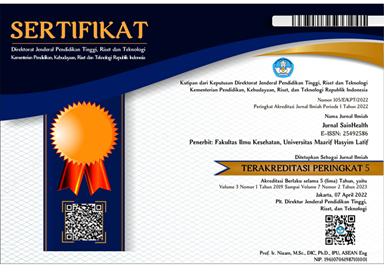ANALISIS JUMLAH DAN MORFOLOGI Penicillium spp PADA MEDIA AMPAS TAHU
DOI:
https://doi.org/10.51804/jsh.v3i2.597.1-8Keywords:
Tofu waste, Penicillium spp, colony number, morphologyAbstract
Tofu waste is generally used for animal feed, potential for biogas production, and as a traditional food. Opportunities for the use of tofu waste are very wide because of the high nutrient content of tofu waste. Tofu waste nutrient content has the potential to be utilized as an alternative medium for mold growth. One type of mold that is often analyse in the laboratory is from the genusPenicillium. This study aims to determine the composition of an alternative growth media from tofu waste for Penicillium spp. This study is an experimental laboratory with the independent variable of tofu waste mass (0,1,2,3,4,5 gr) and sucrose mass (0,2,4,6 gr), while the dependent variable observed from this study includes the amount Penicillium spp colonies and their growth characteristics in tofu waste media. Both dependent variable observed then compared with Potato Dextrose Agar (PDA) as commercial media Tofu waste composition used in this study were (gr/100mL) : tofu waste (0, 1, 2, 3, 4, 5 gr), sucrose (0, 2, 4, 6 gr), aquadest (100mL), and agar powder (1,5gr). Statistical results using the Kruskal-Wallis Test showed the difference of the use of sucrose 2 and 6 gr in the media on thePenicillium spp colonies number. Colony morphology showed better performance at 5 gr of tofu waste mass. Morphological analysis shows the differences in morphological characters which are quite far from commercial media as a control using PDA. As conclusion, tofu waste media can be used to growPenicillium spp, but it is necessary to add some components both in the form of elements and compounds to tofu waste media to be able to display results that can approach commercial media.
Downloads
Published
Issue
Section
License
Jurnal SainHealth is licensed under Creative Commons Attribution 4.0 International License.
Under the following terms:
Attribution — You must give appropriate credit, provide a link to the license, and indicate if changes were made. You may do so in any reasonable manner, but not in any way that suggests the licensor endorses you or your use.
No additional restrictions — You may not apply legal terms or technological measures that legally restrict others from doing anything the license permits.
















